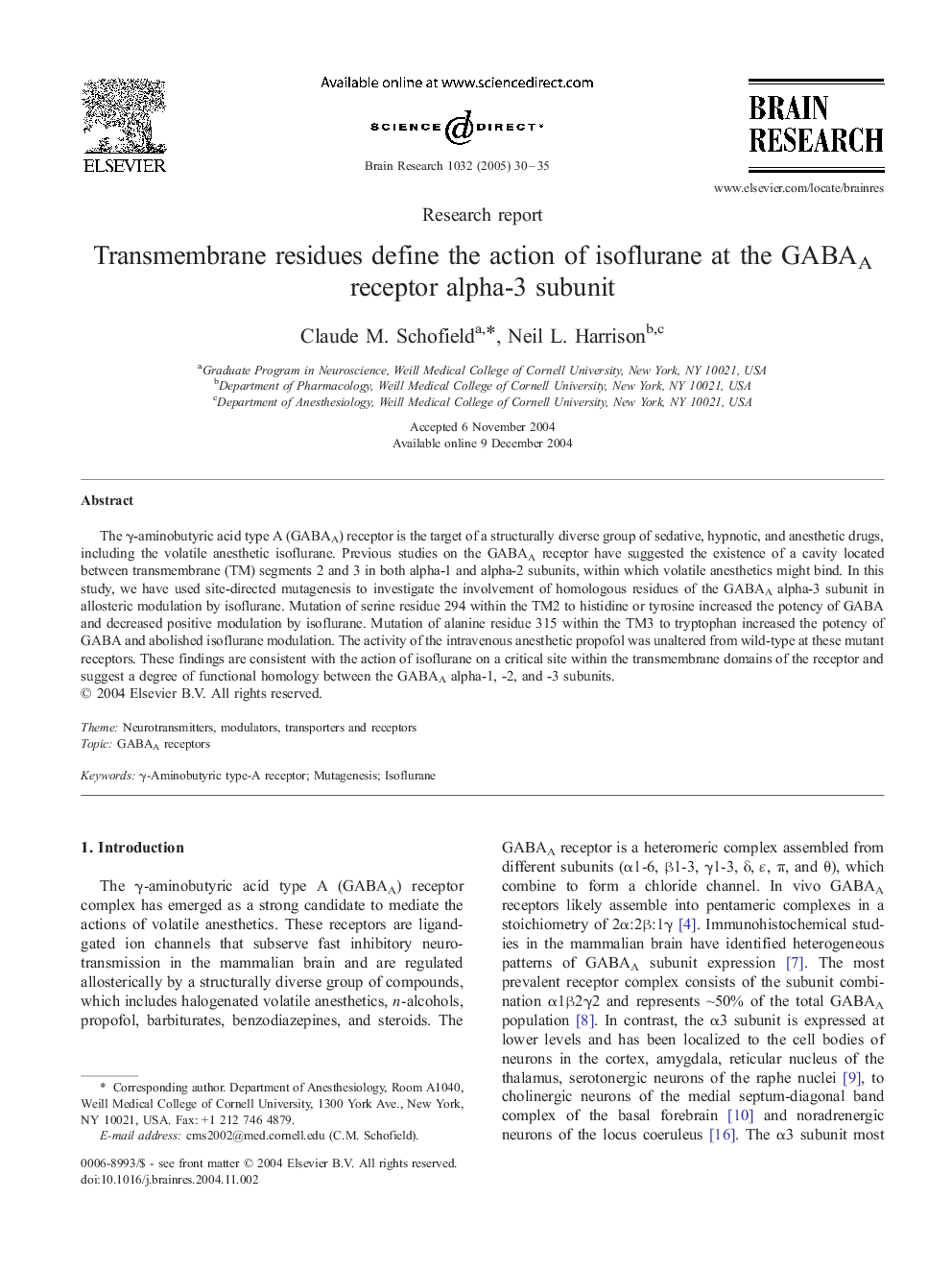| Article ID | Journal | Published Year | Pages | File Type |
|---|---|---|---|---|
| 9416670 | Brain Research | 2005 | 6 Pages |
Abstract
The γ-aminobutyric acid type A (GABAA) receptor is the target of a structurally diverse group of sedative, hypnotic, and anesthetic drugs, including the volatile anesthetic isoflurane. Previous studies on the GABAA receptor have suggested the existence of a cavity located between transmembrane (TM) segments 2 and 3 in both alpha-1 and alpha-2 subunits, within which volatile anesthetics might bind. In this study, we have used site-directed mutagenesis to investigate the involvement of homologous residues of the GABAA alpha-3 subunit in allosteric modulation by isoflurane. Mutation of serine residue 294 within the TM2 to histidine or tyrosine increased the potency of GABA and decreased positive modulation by isoflurane. Mutation of alanine residue 315 within the TM3 to tryptophan increased the potency of GABA and abolished isoflurane modulation. The activity of the intravenous anesthetic propofol was unaltered from wild-type at these mutant receptors. These findings are consistent with the action of isoflurane on a critical site within the transmembrane domains of the receptor and suggest a degree of functional homology between the GABAA alpha-1, -2, and -3 subunits.
Keywords
Related Topics
Life Sciences
Neuroscience
Neuroscience (General)
Authors
Claude M. Schofield, Neil L. Harrison,
